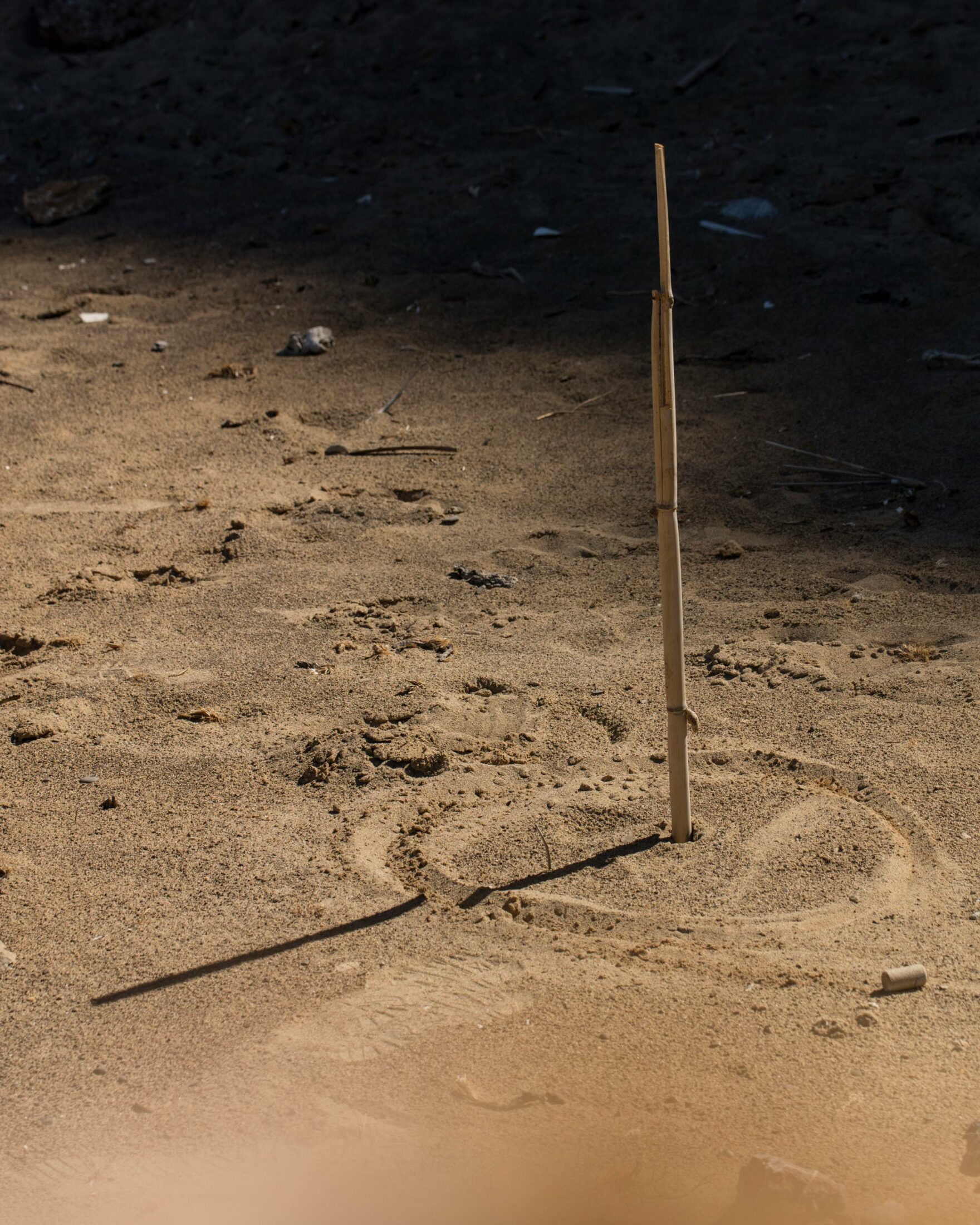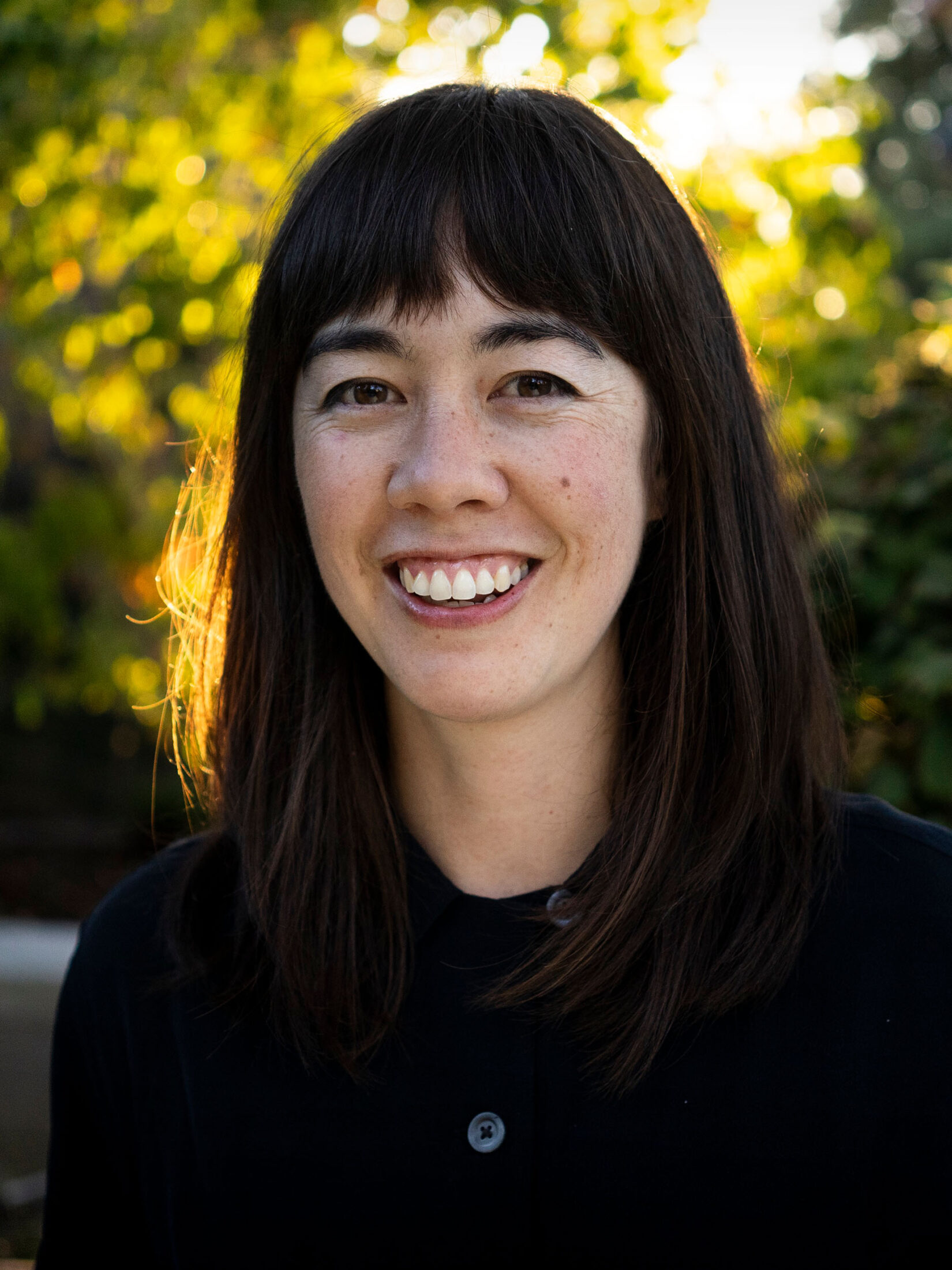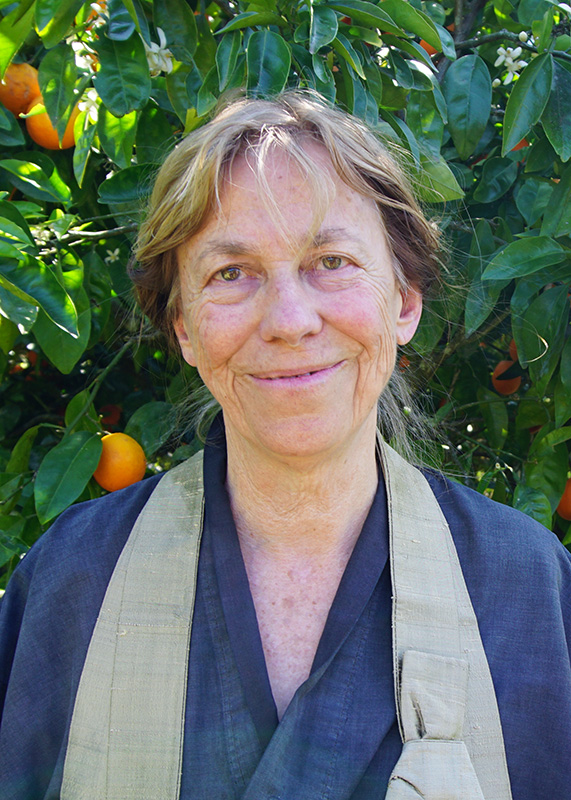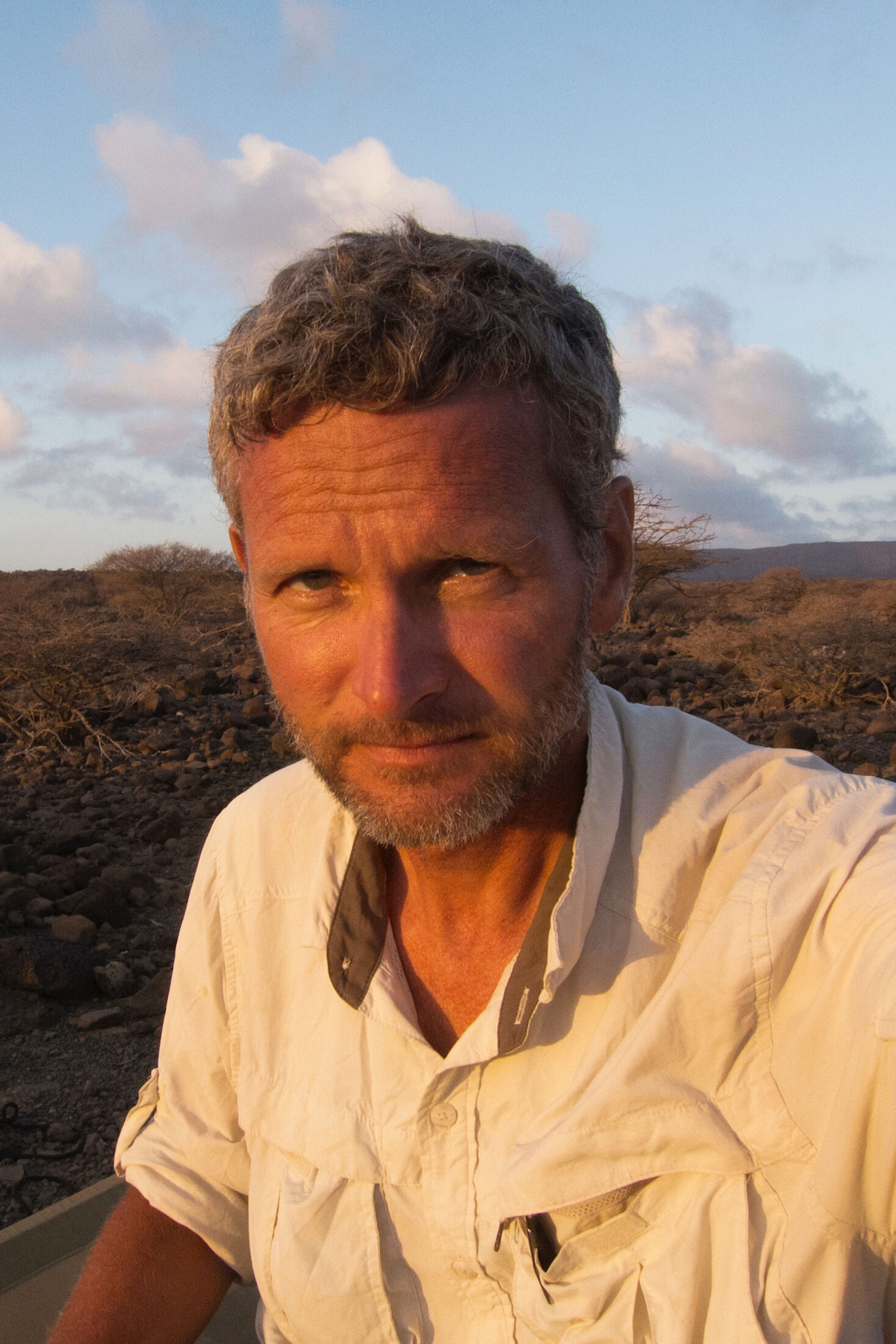
Time and Place
Emmanuel Vaughan-Lee is an author, Emmy- and Peabody Award–nominated filmmaker, and a Sufi teacher. He has directed more than twenty documentary films, including Taste of the Land, The Last Ice Age, Aloha Āina, The Nightingale’s Song, Earthrise, Sanctuaries of Silence, and Elemental, among others. His films have been screened at New York Film Festival, Tribeca Film Festival, SXSW, and Hot Docs, exhibited at the Smithsonian Museum and London’s Barbican, and featured on PBS POV, National Geographic, The New Yorker, and The New York Times Op-Docs. His first book, Remembering Earth: A Spiritual Ecology, is forthcoming from Shambhala in summer 2026. He is the founder, podcast host, and executive editor of Emergence Magazine.
This second talk in a series of three given by Emergence executive editor and Sufi teacher Emmanuel Vaughan-Lee at our Remembering Earth Time retreat in April explores the intimate relationship between time and place. Picking up the thread laid out in the previous talk on working with the love that runs through time, Emmanuel speaks about the importance of awakening ancestral memory of the rhythms of place, so that time becomes rooted rather than abstract, and we can once again find ourselves a participant in the mystery and magic of creation.
Transcript
This morning I want to speak about the intimacy required for engaging with the essential nature of time, and the relationship between time and place, and also the other spaces of time that can open to us through interacting within these realms and relationships of time.
On Thursday, I spoke about the essential nature of time and what is at the core of that essential nature of time, which, to me, is love—which lies at the core of the sacred nature of creation, which exists in everything, which is the cycle, which is the space within the cycle, and how the cycle moves. And whatever form the cycle takes, love is at the core. It is the axis of all things. And the forms that it takes are limitless. They are limitless. And time is just one of those forms. Within, there are more forms than we can ever imagine. But the essence is the same, as it is in all things.
And this braiding together of spirit and matter that I spoke about—part of the process of what remembering Earth Time can reveal—the need to bring these worlds together, the magic that is required, and the core ingredient, which must flow through all of these ways of being as we braid, as we offer an incantation, as we reinvigorate a cycle that has been dormant inside of us, and turn to the cycles around us, to embrace, to relate, to connect, and ultimately to commune, so that we can expand our understanding of time to include all the ways it is represented, all the ways it is manifested. So it is not limited by our hubris, by our straight lines, our boxes, and all that comes with that.
Yes, we can start with the senses, with returning to the rhythms, with our breath, with our heartbeat, with our step, with the attention of our gaze—all of this brings us closer. But the senses, they are at the exterior. What lies beneath? What lies beneath the senses that brings us closer, that connects us to those rhythms? And again, to me, that is love. That is what we are being asked to return to: the essential nature of all things, the axis of all things. And not for our sake, not to benefit only us, but to return to a cycle of mutual understanding, of reciprocity, that can exist when a love is recognized from a space of love for the sake of something much greater than ourselves. Because when love spins into love, it sets off a chain reaction. Because every single cycle is related to every single cycle. The day, the year, the century, the moment—they all exist in concert, they all interrelate.
And if love is the ingredient that we are trying to work with—even if it is abstract at first—and we are reaching for it, at least it is something worth reaching for. ’Cause love is worth reaching for. If we are going to work with love, as we reach across the boundary of our own self into the boundless reality of Her bounty, how are we going to do so? Love has many forms, but intimacy must be a foundational way of relating, with love, to the world around us, the forms of time, the beings that cycle within that time. For if we are truly interested in a form of kinship that our senses can awaken—that our cycles can draw us towards, as our rhythm meets the rhythm of another—if kinship is something we are seeking, then kinship must include an intimacy. Because to be one’s kin, one must know one’s kin. And in order to know, one must be intimate. To be intimate, you also must reveal there is vulnerability, there is giving, there is offering, there is space—and there is no taking. Because a real act of intimacy, when it is given, is an offering. It is not a taking.
An intimacy is one of the most beautiful and foundational expressions of love. And it draws one to another. It pulls you and you are pulled. It does not become a singular experience; it becomes truly a dance, truly a seduction. To be intimate, there must be seduction. And you are seducing, and they are seducing; and in the middle, there is intimacy, there is love, there is kinship, there is a knowing, a coming to know the other. And through that coming to know a part of oneself which is only awakened in relationship to that other—to that form, to that cycle, to that expression of time—it reveals something inside of ourselves that we do not know.
Because every cycle is made up of more cycles than we know. Layers upon layers upon layers. And as we reach out, a cycle becomes more than what we see. Deeper, deeper. It is as if a single circle becomes a million circles, becomes a billion circles, and there is no end; because the ways of knowing, the ways of being in relationship, the ways of love, the ways of intimacy—they do not have an end point, they do not have a stopping point. Love has no limit. The axis of all things has no limit, whether in undiluted essence or manifest form. Because this coming to know, this kinship, this intimacy—it leads to something lasting. As I said, the difference between nature connection and nature communion: You connect, you forget. You commune, you are there. It has become part of you. You are changed by the experience, and you do not forget. It is lasting. There is a layer of intimacy that stays within you which acts as a bond.
Kinship is a bond, not an idea, not a concept. Kinship is a bond. You are bonded to kin. It is like blood. And through remembering these forms of time, these cycles, these ways of relating, these ancient bonds can be reawoken, reformed, remade, through intimacy. Awareness, yes; attention, yes; consciousness, yes. But those all lead one closer to a space where one must leave oneself slightly outside the room and enter, not for your sake, but for the sake of what is there. The relationship that is waiting. The relationship that is waiting.
And when that bond begins to form in your heart, in your body, even in your mind, it stays there, it leaves a residue, it forms this layer of connection. Something is imprinted. And when something is imprinted, it is lasting. It cannot so easily be erased. It is imprinted. The substance of that form is imprinted in the substance of your form; the substance of their cycle becomes part of your cycle. It is imprinted. Cycle meets cycle, form meets form. What lies within both is the same, because the essential nature of all things, the axis of all things, is love. It flows. Form, emptiness—they can change. Axis always stays the same. It takes on many forms, but it is always present. And so it is imprinted. This form is imprinted. Because it uses the same language, it can so easily work with it.
And there is a specificity to the way that this imprint is left in your being. It is not an abstract imprint, because the relationship between time and place is more nuanced than we understand; because what unfolds in that cycle, in that form, is specific to place. Specific to place. And when you engage with a cycle in that place, that specific imprint is related to that place. It is a thread that leads back to that place. One can relate to an oak tree anywhere in the world there is an oak tree, and an imprint can be given through that kinship when one moves away from the self towards the other and this ancient language of love reignites what was there once before. But it does not connect you to every single oak tree in the same way, because each oak tree is different and it is in relationship to place. There is specificity in the way this language of love—and the way that the imprint can be formed in your being from one to another—plays out. It is specific. And that imprint, it ties you—not just to that form, and a bond between you and the other—but it also ties you to the place that that form is from. It ties you to the place that form is from. So you are no longer a stranger in the same way. That place becomes known to you through the imprint of those forms into your form. That oak tree becomes part of you, and you become part of the oak tree.
This was the way that time and place and human beings and all the other beings used to be. And it played out very simply without the domination of the mechanistic model that is so overwhelming in our world now. Life was simpler. And this natural flow of time and place existed as you grew up in a landscape, and you were based in one place your whole life, and your ancestors were from this place. The imprint of their relationship with those forms was part of their ancestral memory that came through and became part of you. And you brought that with you. And then you played out that story in your own way as you walked through a landscape and the imprint of relationship—as you naturally absorb these cycles of time in your being—created a connection to place.
Time exists in relationship to place. We have removed it and said, “It is the same here as in another part of the world. It is atomic time. It is not place-based time.” And that is very dangerous, because those ties of kinship, those threads of love, those imprints—they are separated from what grounds them. And we have become unmoored. We are a society unmoored from place.
So few of us are raised in a single place anymore. We have been removed for many reasons. But this journey of healing, if you will, of transformation, if you will, of returning, of remembering—it also requires a reigniting of that ancient relationship to place. Not as before, because our world is not as before. We may not live in one piece of land our whole life. The world has changed. Our family comes from many places. That ancestral memory brings with it imprints from all sorts of places, a hodgepodge of memories. But what is required is also to return to that understanding of the relationship of time and place. Because if we understand it, then we create bonds with place—even if we are a visitor in a landscape like this for a few days. We are not a trespasser; we are a participant, recognizing and acknowledging the nature of time as it exists in place. Not bringing our concept of time onto a landscape, onto a place, and imposing it, but rather understanding that that expression of time is a nuanced attribute, a nuanced expression, that only exists there at that time, at that moment. And that is where we become this participant in mystery, because it is incredibly mysterious if you start to really think about that.
The time and place and space and love and kinship and the cycles and rhythms of creation all flow in concert. And while we can understand it a little, we can never fully understand it. And that is what makes it so, so magical, so mystical. But we can still form an imprint and let that imprint have a way with us. And that imprint comes from intimacy, an expression of love.
And as those bonds of kinship through this imprint that is formed deepen, these ties of place deepen, there becomes an intimacy not only with the specific manifestation of that form—of that oak tree—but there is an intimacy with the place around the oak tree. Because love flows through intimacy. And so you are given a key, a gateway to the other cycles that exist in relationship to that oak tree, to that form. And that landscape now becomes accessible to you. That place becomes accessible to you. And that place becomes part of you, even if at first it is a shallow imprint, a shallow impression, a shallow understanding that must be built upon and built upon and built upon. And yes, our layers of place may be scattered—and maybe at this time that’s all we can do. Maybe in the future it will change. It is not for us to go and find one place to live in and stay there until we die. If you are called to do that, of course, do that.
But there is a magic and a power present in this relationship and time and place that can exist within the ridiculousness of the world that we live in. We do not have to wait for it to become a romantic, ideal version for us to occupy. No. Because I think the way home, and the road out of this madness, is to find a way to bridge the worlds again—as they are broken. Because they are broken worlds. And we are broken. And so we must do our best. And time is one such way to heal and help us find the light within the darkness of this time, so that what is really part of our ancestral—even for us who have been so removed from that relationship to place and land here in the West—it is still there. It is still there. This ancestral memory of what it means to be in relationship to place can again be awoken. Can again be awoken. So that time is not abstract: time is rooted.
And wherever you are, inside of you is that relationship to those forms, in relationship to those places. And those roots run deep. Remembering Earth Time is remembering Her, this great being that is the Earth. And Earth Time is the way She spins; the many, many ways She spins within the cycles. And these forms of place, they are a way of remembering Her. Through time, we remember Her. Through place, we remember Her. And then we step deeper and deeper into the mystery.
We start on the outside looking in as observers, and slowly we are drawn in through the senses, through the rhythms, through the returning to what is most essential, through that love at the core that then opens those gates and brings us inside another circle, where a kinship can be present if the intimacy of love is honored and given.
And then we are changed. We are changed. And something exists inside of us that will not be separated very easily. Just like a love affair from time past, even if it ended with heartbreak, it remains inside of you, because it touches you on the level of the soul. Because the language of love is the language of the soul. And those imprints of relationship, those imprints of kinship between place and time, they are imprinted on your body. They’re imprinted on your emotional body, your psychic body, your spiritual body, and your soul—because it is the soul that feels love in the deepest way. And then those ties of kinship are truly rooted, because the soul has made this intimate connection of love and brought it through, and inner and outer are connected.
In Sufism we have this term: You make the journey from the world of visibility to the world of mystery, the world of the senses. It starts with the body, it starts with the beat of the heart, the physical sensation. And where does that take you? It takes you into places that you don’t know. And time and place has that capacity. It is that portal that I spoke about. It is that magic. You step out of one circle and you step into another, a circle of love. And you don’t leave behind the trail of your longing as you move deeper; the trail of the kinship as you move deeper. It stays there. A thread is woven between the worlds of spirit and matter. And this is important, because this was not always so.
And this is to me what is most important about some of the work that needs to happen: to not forget the earthly ties of kinship as we make a journey deeper to what you might call the soul realm or the transcendental realities, which were sadly so often cut from the earthly ties of their origins. So many of the mystery schools veered away from their roots, which is Her, to experience the timeless, the realms of time that exist outside of the realities we can perceive with the senses. Because the deeper one goes into ties of kinship through place and through love, the deeper one goes down the rabbit hole of time, and one can step deeper and deeper into the timeless. And as one does that, one cannot forget where one has come from.
Those ancient ways of knowing were cut far too often. The simple act of relying on a clock: it cuts, it cuts, it cuts. Of saying, what is above is better than what is below: it cuts, it cuts, it cuts. And those wounds, they must be healed through the braiding of the world with the braiding of spirit and matter. And nothing must be excluded. Place cannot be excluded. Love cannot be excluded. She cannot be excluded. And the daily act of intimacy, it lies at the core of all this: because it is through the ongoing recognition of what kinship means—as it is made visible to us in our lives, through the forms and times that She exhibits Herself—we must engage and engage and engage. Because each form of time is different and must be related to almost anew, because you cannot relate to one lover as another. Each lover must be related to as they are. And if you want to speak the language of love, as much as you want to step into the cycles of time and deepen one’s relationship to place, then each interaction of intimacy must be new, starting anew, connecting anew. Otherwise it just becomes a uniform experience, and we are back at the beginning.
And that’s the magic. The magic of each time being the first time. And to never tire of it, to project ourselves onto that experience and say: I’ve done that. I’ve made that relationship. I’m moving on. Because then the circle slowly becomes a straight line again. Because the circle always is going back, always is going back to the beginning. You were always going back to the beginning. If you think you have arrived somewhere, the line is straight, the cycle is broken, the truth forgotten.
There are many languages to learn. Time, place, love. We are beginners. The magic of a beginner is so precious. And it is an important point, to me, because it is so fundamental what we are being asked to return to, that we must have the mindset, the openness, to be beginners; to say, I have no idea, I do not understand time, I do not understand place. I do not understand much of anything. Because then space is created, and we are not just projecting ourselves onto the experience we think we are having. We must be beginners, learning how to be intimate, over and over again.





